In any industry, even a brief period of downtime can result in substantial financial losses. Proper maintenance is not just a routine task—it is an important strategy for preserving the performance, reliability, and lifespan of your PowerFlex 7 drives. If done correctly, maintenance helps sustain these drives’ performance and longevity. This article mentions the best maintenance practices to help you increase your system’s reliability.
Setting the Maintenance Cadence
A proper maintenance plan consists of pre-scheduled periodic inspections. It is recommended that the first inspection be conducted on the newly installed drives within the first 3-4 months of installation. After the initial inspection, an annual maintenance schedule can be planned. The frequency of inspections needed is based on the operation and environmental conditions. This is a benchmark approach to detect potential issues as early as possible.
Eliminating Contamination
Contamination from dust and debris adversely affects the drive performance. These are highly flammable particles; any electrical contact with such accumulations can be hazardous. During every inspection, drives must be examined for signs of contamination. If contaminants are present:
- Check for unsealed enclosure openings, ineffective enclosures, or improper operating procedures.
- To remove dust and dirt particles, use vacuuming or wiping. Do not use compressed air, as this can embed contaminants into sensitive areas.
If a part cannot be cleaned thoroughly, it must be replaced. Consistently addressing contaminants will make your equipment more reliable.
Thermal Management
Cooling devices play an important role in any operation as they prevent over-temperatures. Routine maintenance of such components includes:
- Check for physical damage, such as a bent or chipped blade, and check if the shaft can turn freely. Momentarily apply power to confirm functionality. If necessary, replace the nonoperational units.
- Reusable filters should be cleaned monthly, inspected, and replaced every three months or sooner in harsher environmental conditions.
Comprehensive Cooling System Maintenance Schedule
Cooling fans like Main Heatsink Cooling Fan(s), Door-mounted Cooling Fans, Capacitor Bank Cooling Fans, Converter Input Fuse Stirring Fan, Converter Gate Board Stirring Fan, and DC Precharge Control Board Stirring Fan should be inspected monthly and replaced every 5 months.
For critical components such as IGBTs and capacitors, annual inspections and cleaning are to be done annually. Do not dismantle the entire drive for access. The life expectancy of these power section components depends entirely on operating and environmental conditions. However, they are designed to last more than 10 and up to 20 years, similar to the life cycle of wall-mounted drives.
Preserving Bus Capacitors
Bus capacitors are required to be monitored carefully, especially during storage. Following are the guidelines for reforming.
Storage duration and reforming requirements
- For storage duration under 2 years, no reforming is required.
- For storage durations between 2 and 3 years, rated voltage is to be applied per the normal method for half an hour under no load.
- For storage duration over 3 years, a DC power supply is to be connected directly to the DC terminals to ramp up the DC bus voltage from 0 to 100%, in steps of 50%, 75%, and 100% rated voltage, under no load, for 30 minutes at each step.
DC bus voltage ratings based on input voltage
- 230AC input voltage is required to ramp up 325V across the DC bus.
- 400/480AC input voltage is required to ramp up 680V across the DC bus.
- 600AC input voltage is required to ramp up 848V across the DC bus.
- 600/690AC input voltage is required to ramp up 976V across the DC bus.
Disconnect all internal stirring fans in frame 6 and 7 drives of the PowerFlex 753 and 755 models before applying the voltages. This is to ensure that capacitors are reconditioned without the risk of failure.
Ensuring mechanical integrity
All equipment is prone to mechanical wear and tear. There should be regular checks to ensure that your drive is in top condition. These checks should focus on:
- Verify if the equipment is properly functioning and free from binding. Replace any broken parts and re-tighten any loose fasteners. Allen-Bradley contactors and relays do not use lubrication, so avoid oil or grease, as it could impair functionality.
Maintaining Electrical Contacts
Proper contacts are essential for any kind of electrical connection. Contact maintenance includes:
- Slightly discolored contacts and minor pitting are acceptable. However, severely damaged contacts must be replaced.
- Contacts should not be filed or sprayed cleaners, as residues can lead to sticking and affect the continuity.
Whenever replacing, contacts are to be replaced in complete sets to maintain alignment and even pressure.
Terminal and Coil Maintenance
Loose terminals can be hazardous as they can cause overheating and sparking, which may eventually result in equipment failure. During inspection, check the tightness of all the connections and replace the parts that are worn due to overheating. Coils should also be inspected for signs of overheating, such as insulation damage. Replace the damaged coil and address the underlying voltage issues.
Solid-State Devices
SSDs, such as PCBs, require minimal maintenance. However, there should be periodic inspections for proper seating in edge connectors. It must be verified that locking tabs are in place. Do not use solvents during cleaning. For drives equipped with blowers, clean air filters regularly to maintain performance.
Auxiliary components
- Check pilot lamps and replace any burned-out lamps or damaged lenses.
- Check the locking and interlocking devices for proper functionality and repair or replace them as needed.
Replacements and spare parts
It’s important to replace the damaged component only with the genuine Allen-Bradley part. Make sure that replacements match the drive’s model, series, and revision level. This practice ensures consistent performance even after repair.
Leveraging predictive maintenance
Advanced drives like the PowerFlex 755T have built-in predictive maintenance technology. This feature provides real-time insights into the health of major components like fans, IGBTs, and capacitors. This technology analyzes the actual usage and predicts maintenance needs.
The importance of record-keeping
Accurate maintenance records help identify recurring issues in a system. These records streamline troubleshooting and guide inventory planning for spare parts. Keep a detailed log of parameter settings for reference during future maintenance and repairs.
Final System Testing
The drives should always be tested under controlled conditions after maintenance. This final testing ensures that all components function properly and minimizes the risk of hazards during actual operation.
These are some general but detailed maintenance practices to maximize the uptime and reliability of your PowerFlex 7 drives. Preventive and predictive maintenance, with appropriate records and adherence to recommended schedules, ensures that your vehicle maximizes its lifespan and performs optimally, even in demanding conditions.
We understand that maintenance could be missed and that drives could have spontaneous problems. That’s why we offer repair services for your drives in need. We also carry a wide selection of PowerFlex 7 series drives that are ready to be shipped to your door, all backed by our 2-year Do Supply warranty. Give us a call today and we can help find your next automation breakthrough! We also have a blog that highlights the differences of the PowerFlex 7 series drives here!




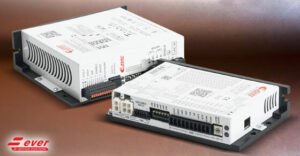


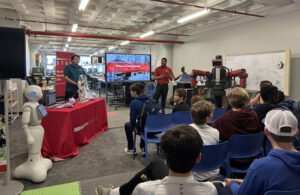


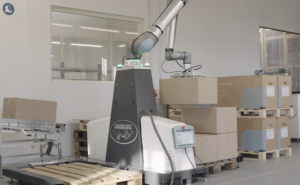

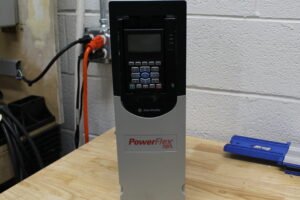
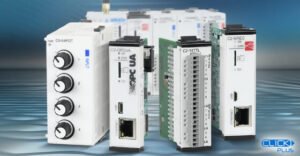
Post Comment